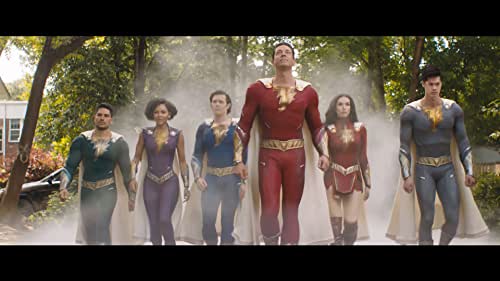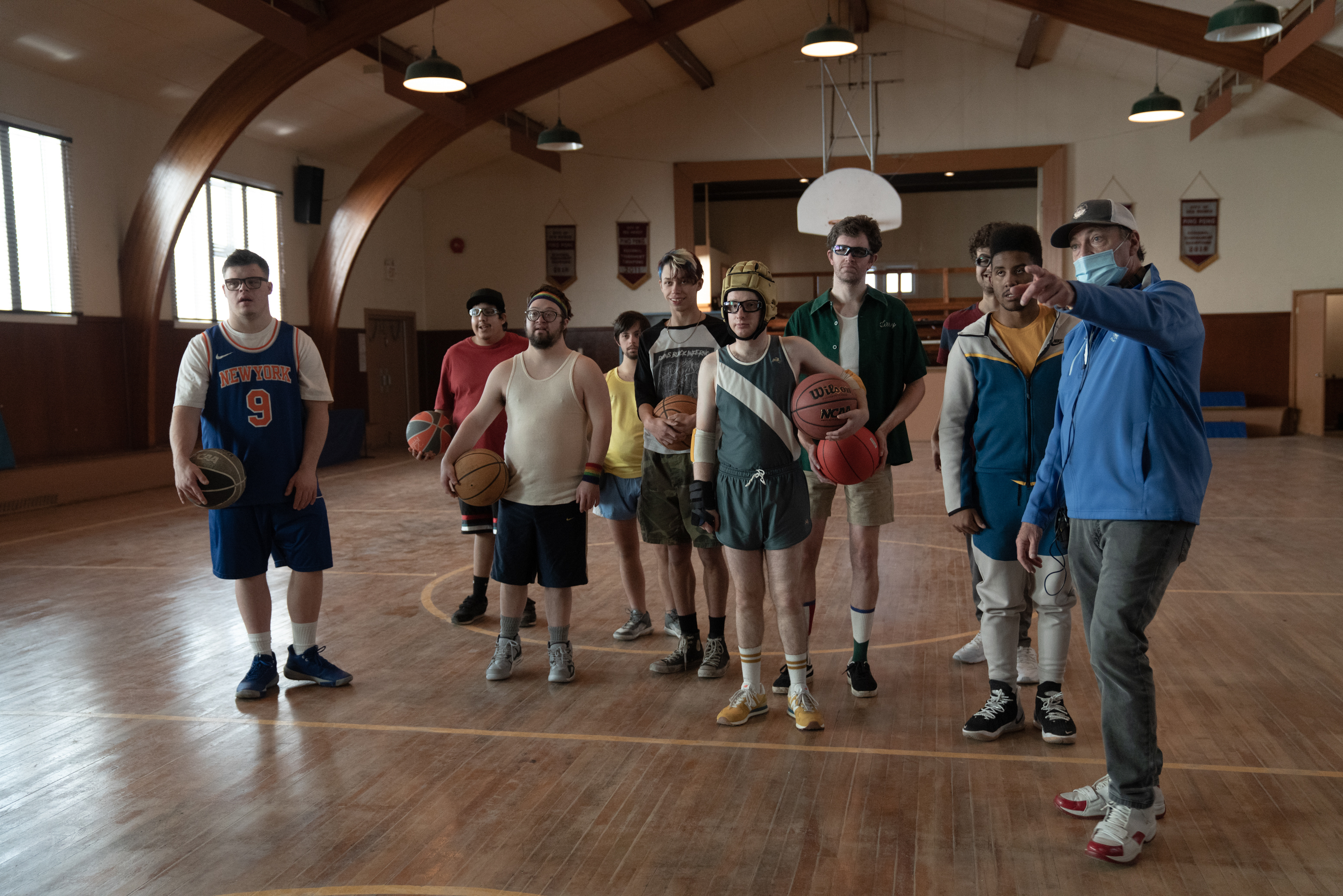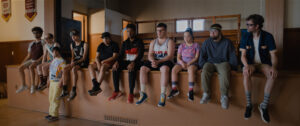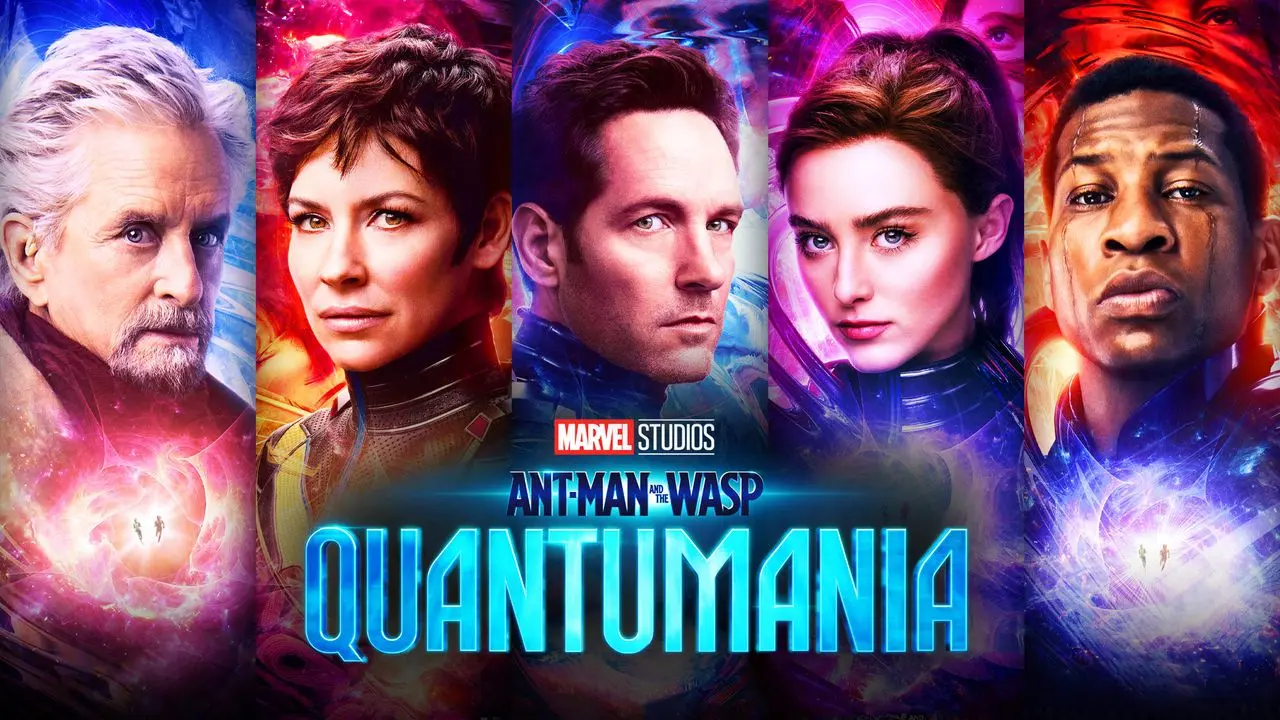Shazam: Fury of the Gods
Posted on March 16, 2023 at 9:28 pm
B +| Lowest Recommended Age: | Middle School |
| MPAA Rating: | Rated PG-13 for sequences of action, language, violence |
| Profanity: | Some schoolyard language |
| Alcohol/ Drugs: | None |
| Violence/ Scariness: | Extended action-style fantasy/superhero peril and violence, teacher killed, continuous peril |
| Diversity Issues: | Diverse characters |
| Date Released to Theaters: | March 17, 2023 |
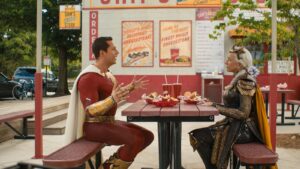
That film ended with Billy granting superpowers to the other five kids in the foster home, ranging in age from kindergarten to about to start college. So this movie loses some of the sweetness of the first in juggling adult and young versions of five of the six characters plus not one but three new supervillains, the goddess daughters of Atlas, played by “West Side Story’s” Rachel Zegler, “Charlies Angels'” Lucy Liu, and classically trained Shakespearean actress Dame Helen Mirren. Plus dragons, unicorns, and monsters. So that’s a lot of clutter and especially a lot of CGI that overwhelms the plot and all-but obliterates the tenderness of the first story.
Still, it is fun to watch (Helen Mirren!), all the way through the two extra scenes, one at the very end of the credits.
Billy (Zachary Levi as the superhero) is glad to be part of a team of superheroes, and insists that all six of them have to be together on all adventures. This is making some of the other five feel smothered, especially Freddy (Jack Dylan Grazer as teen, Adam Brody as superhero). He calls his superhero version Captain Everypower, enjoying his freedom from the crutch he needs as his old self, and very tentatively making contact for the first time with a girl named Anne, new to his school. The oldest of the foster siblings, Mary (Grace Caroline Currey as both human and super versions) would like to go to college. But Billy, because of his history of trauma and abandonment, sharpening as he is about to age out of the foster care system, cannot let them go.
Two of the Atlas daughters, Hespera (Mirren) and Calypso (Liu), in a scene reminiscent of the first “Black Panther,” enter a museum in Athens and steal the pieces of the Shazam staff that was broken by Billy at the end of the first film. They use it to restore their powers and search for the golden apple that they will use to replant the Tree of Life from their realm, even though its impact on our world will be total destruction.
So it is back and forth as various characters gain and lose powers and waver in their goals and loyalties. The weaker parts of the film include Billy’s fixation on Wonder Woman, which is weird and a bit creepy, and the murder of a kind teacher, which is jarring in the world of this story. The look of the film is fine, especially the lair (so labeled), with a mysterious room of doors that deserves more exploration, and a fabulous library with a sort of proto-Google and Alexa, a magical pen that writes answers and takes dictation. Freddy and the wizard (Djimon Hounsou) play more of a role in this film. Grazer has an exceptional sense of timing and Freddy is one of the series’ best characters. The creatures are not as well-designed, though the dragon flies well. The mid- and end-of-credits scenes give us a sense of what comes next. I hope chapter 3 will return to more character and story.
Parents should know that this film has extended comic book-style action violence (meaning no blood or graphic images), with scary monsters and constant peril. A teacher is murdered. Characters use some strong language.
Family discussion: Which superpower would you want to have? What made Billy deserve to be granted powers?
If you like this, try: the original “Shazam” and other DC movies including “Wonder Woman” and “Aquaman”

